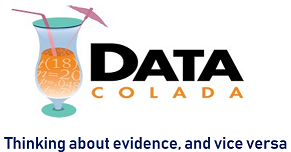In this second installment of Data Replicada, we report two attempts to replicate a study in a recently published Journal of Consumer Research (JCR) article entitled, “Wine for the Table: Self-Construal, Group Size, and Choice for Self and Others” (.htm). Imagine that you are in a monthly book club and it is your job to…
Category: Discuss Paper by Others
[82] Data Replicada #1: Do Elevated Viewpoints Increase Risk Taking?
In this post, we report our attempt to replicate a study in a recently published Journal of Marketing Research (JMR) article entitled, “Having Control Over and Above Situations: The Influence of Elevated Viewpoints on Risk Taking” (.htm). The article’s abstract summarizes the key result: “consumers’ views of scenery from a high physical elevation induce an…
[79] Experimentation Aversion: Reconciling the Evidence
A PNAS paper (.htm) proposed that people object “to experiments that compare two unobjectionable policies” (their title). In our own work (.htm), we arrive at the opposite conclusion: people “don’t dislike a corporate experiment more than they dislike its worst condition” (our title). In a forthcoming PNAS letter, we identified a problem with the statistical…
[74] In Press at Psychological Science: A New 'Nudge' Supported by Implausible Data
Today Psychological Science issued a Corrigendum (.htm) and an expression of concern (htm) for a paper originally posted online in May 2018 (.htm). This post will spell out the data irregularities we uncovered that eventually led to the two postings from the journal today. We are not convinced that those postings are sufficient. It is…
[60] Forthcoming in JPSP: A Non-Diagnostic Audit of Psychological Research
A forthcoming article in the Journal of Personality and Social Psychology has made an effort to characterize changes in the behavior of social and personality researchers over the last decade (.htm). In this post, we refer to it as “the JPSP article” and to the authors as "the JPSP authors." The research team, led by…
[54] The 90x75x50 heuristic: Noisy & Wasteful Sample Sizes In The “Social Science Replication Project”
An impressive team of researchers is engaging in an impressive task: Replicate 21 social science experiments published in Nature and Science in 2010-2015 (.htm). The task requires making many difficult decisions, including what sample sizes to use. The authors' current plan is a simple rule: Set n for the replication so that it would have 90%…
[50] Teenagers in Bikinis: Interpreting Police-Shooting Data
The New York Times, on Monday, showcased (.htm) an NBER working paper (.pdf) that proposed that “blacks are 23.8 percent less likely to be shot at by police relative to whites.” (p.22) The paper involved a monumental data collection effort to address an important societal question. The analyses are rigorous, clever and transparently reported. Nevertheless, I do…
[38] A Better Explanation Of The Endowment Effect
It’s a famous study. Give a mug to a random subset of a group of people. Then ask those who got the mug (the sellers) to tell you the lowest price they’d sell the mug for, and ask those who didn’t get the mug (the buyers) to tell you the highest price they’d pay for…
[25] Maybe people actually enjoy being alone with their thoughts
Recently Science published a paper concluding that people do not like sitting quietly by themselves (.html). The article received press coverage, that press coverage received blog coverage, which received twitter coverage, which received meaningful head-nodding coverage around my department. The bulk of that coverage (e.g., 1, 2, and 3) focused on the tenth study in…
[11] “Exactly”: The Most Famous Framing Effect Is Robust To Precise Wording
In an intriguing new paper, David Mandel suggests that the most famous demonstration of framing effects – Tversky & Kahneman's (1981) “Asian Disease Problem” – is caused by a linguistic artifact. His paper suggests that eliminating this artifact eliminates, or at least strongly reduces, the framing effect. Does it? This is the perfect sort of paper…
